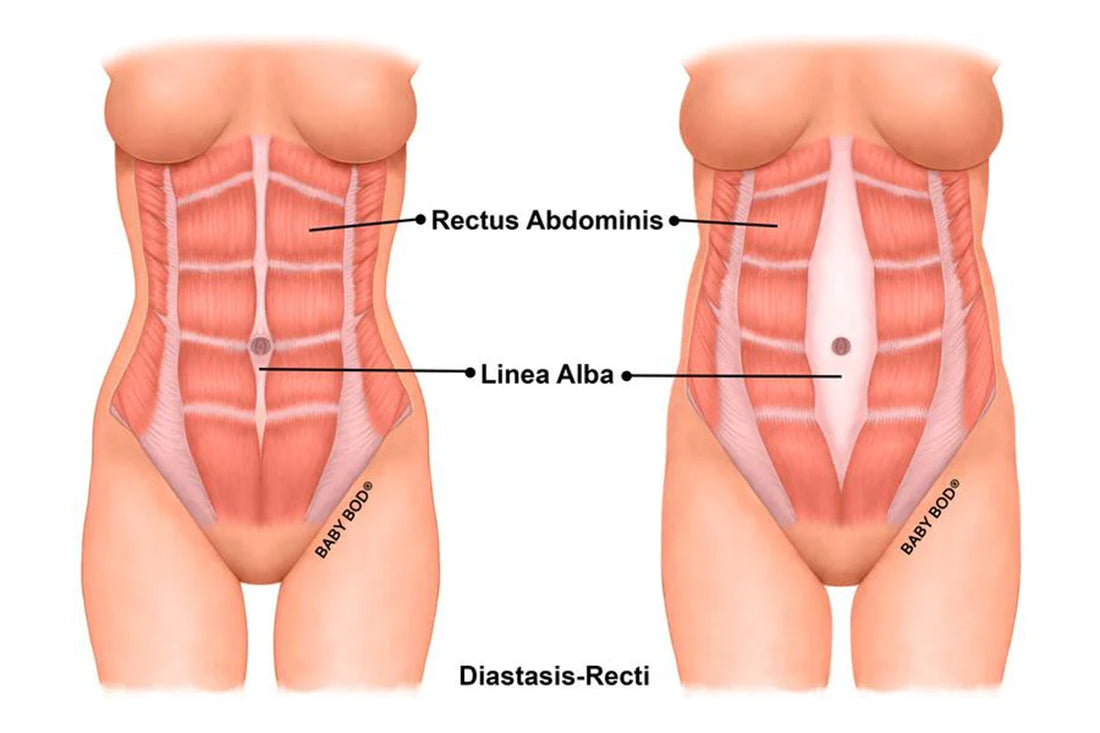Article contributed by Marianne Ryan PT, OCS and award winning author of Baby Bod.
This is the first in a series of articles about diastasis recti. You will learn, what is diastasis recti, how to test for it, why mainstream exercises programs do not work, and the best ways to deal with diastasis recti.
Did you ever wonder why so many moms still look pregnant several months or even years after they deliver their baby? It’s likely these moms have diastasis recti. This happens when the two six pack muscles in the stomach separate.
During pregnancy, it is normal for these muscles in the abdomen to spread apart to make room for your growing baby. After childbirth, this separation usually reduces back to normal within a month or so. But, it doesn’t in about up to 60% of mothers.
Why does this happen?
It’s not that there’s a true cut or a tear separating these muscles. Hormones that are produced during pregnancy cause the connective tissue, Linea Alba, that lies in between the “six-pack” muscles, Rectus Abdominis, to become looser and more pliable, and will make the muscles spread apart. This is a normal and needs to happen during pregnancy to allow the belly to accommodate the growing baby inside a mother’s belly.
Before pregnancy, this connective tissue, called the Linea Alba, is normally taut and serves to anchor the 2 Rectus Abdominis muscle strips in place, allowing them to remain relatively parallel to each other, on either side of your belly button.
After childbirth, most women have this separation for a few weeks, but it does not resolve with as much as 40% of women 6 weeks after childbirth. If the Linea Alba is loose, the shape of the belly is changed and it will protrude outwards forming a dome in the middle of the tummy.
Yup, that is the dreaded “Mommy Tummy.” Not a pretty picture!
Figure 2: Picture of a mother who is one year postpartum with Diastasis Recti
Medical conditions related to diastasis recti
Most people who have diastasis recti complain that they feel bloated and are frustrated when their belly budges after eating a meal. If you have this condition, the earlier you know about it, the better. Studies have shown that women who have a diastasis recti are more likely to develop lower back pain, incontinence, and pelvic organ prolapse; conditions you definitely want to stop in their tracks. There are definitely things you can do to promote healing and, at the very least, prevent this condition from getting worse. If you ignore it, however, you can unknowingly make the condition worse.
Moms should beware:
Even if you don’t have diastasis recti now, you need to be aware of the condition and be watchful. Studies show that it can develop years after you give birth. So, even if you don’t develop it after childbirth, it can develop later on as a result of straining the belly.
In the next article, learn how to figure out if you have diastasis recti.



